TechRadar Verdict
This Strava-powered watch disappoints more than it impresses - an unremarkable Android Wear watch but GPS is a plus.
Pros
- +
GPS
- +
Smartwatch capabilities
- +
Music playback
Cons
- -
Expensive
- -
Data doesn't sync well
- -
Battery life not great
Why you can trust TechRadar
The Essential Review
This is TechRadar’s review summary that gives you all the key information you need if you’re looking for quick buying advice in 30 seconds - our usual full, in-depth review follows.
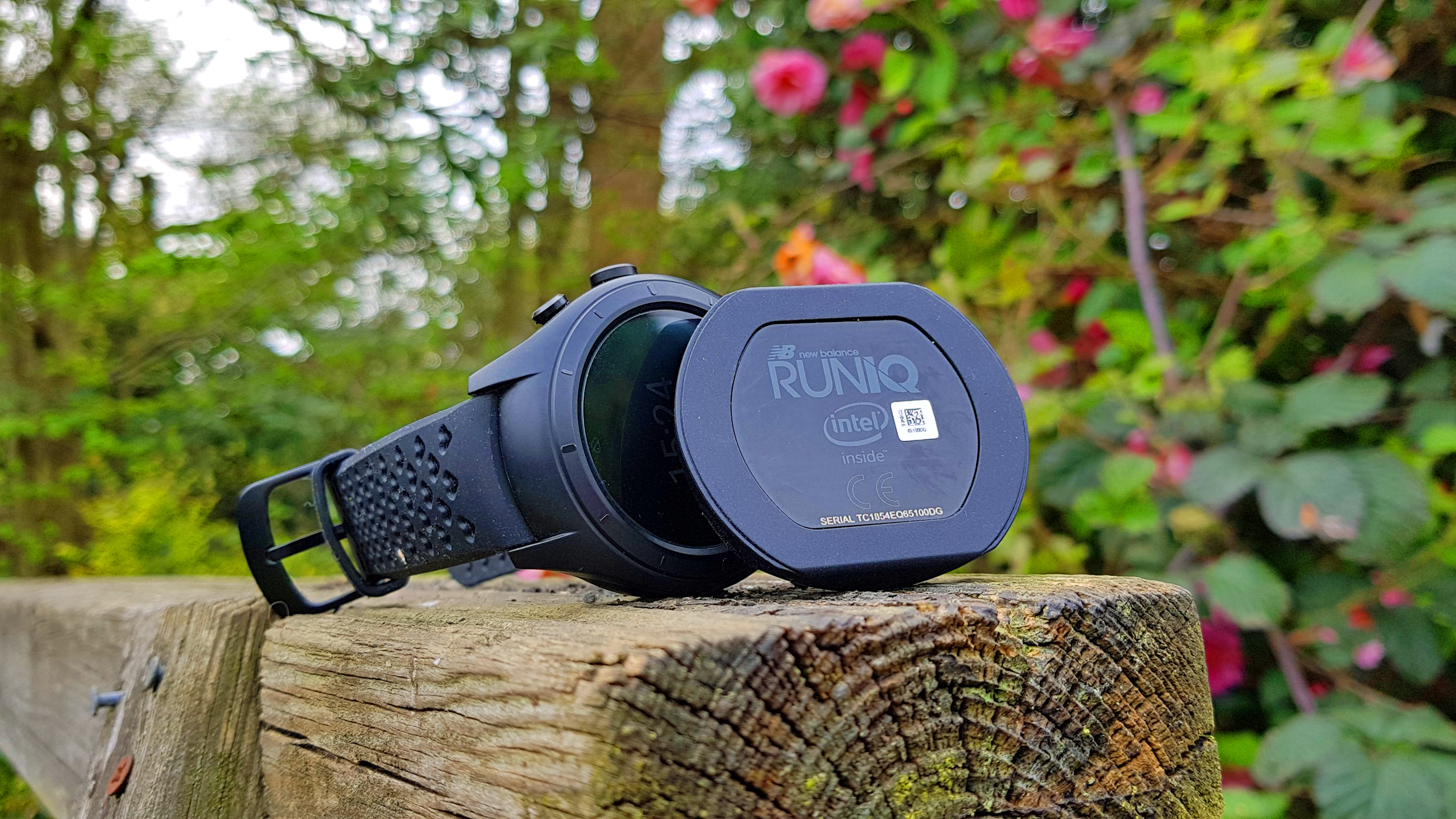
The New Balance RunIQ is a watch that, really, should be better than it is. The recent Android Wear 2.0 update has really helped though, and it’s now far better value for money.
It’s been co-developed with Strava, so you’d expect it to be stellar - but in reality the standard running or cycling experience is too basic and rather hard to navigate.
You’re given four metrics to swipe through when running: distance / pace, cadence, heart rate and lap time. It’s basic and hard to swipe though, and the screen will turn off when running (or, at best, be hard to read if you have the always-on display activated) and not light up unless you tap the display.
The GPS accuracy is much-improved with the recent update to Android Wear 2.0, with a fairly instant GPS lock…although compared to a Garmin watch (one we consider to be a gold standard in accuracy) it can be a little off in terms of distance tracked.
The battery life is just about OK, and you’ll probably be able to run a marathon with this watch if you can do it in under four hours. Otherwise, it’s a training watch - albeit one that you’ll only need to charge every day and a half in ‘normal’ mode.
As an Android Wear watch, it’s, well, fine... maybe a bit pricey. As a running watch it’s too expensive, under-powered in terms of what it can do and doesn’t even upload all the data to Strava. If you have to have an Android Wear running watch… actually, just buy the Polar M600.
Who's it for and should I buy it?
This is a watch for someone that wants to have an Android Wear smartwatch with running smarts - and has a Google Play Music account and an Android phone.
It’s not a terrible running watch, but the RunIQ is far from a good one. There are better out there for less money that synchronise with Strava just fine - so if you’re someone that has no interest in tech or is a more serious runner, steer clear of the RunIQ.
New Balance RunIQ price and availability
- Price at launch: £325 ($299/AU$450)
- Current price: £325 ($299/AU$450)
- Release date: January 2017
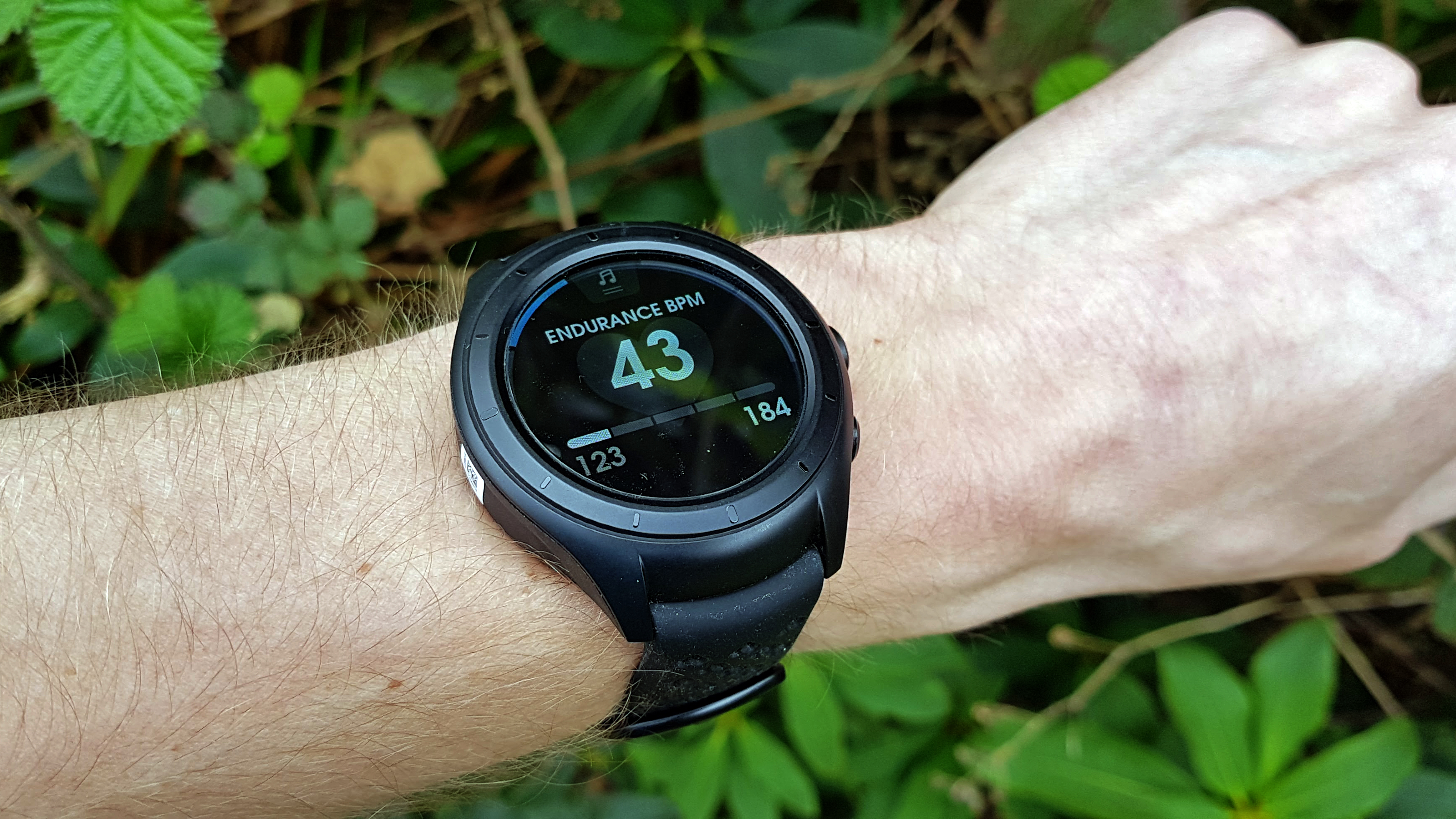
Developed with Strava... isn't great with Strava
- Data doesn't always sync easily
- Heart rate data doesn't appear
- GPS accuracy is fine, but not stellar
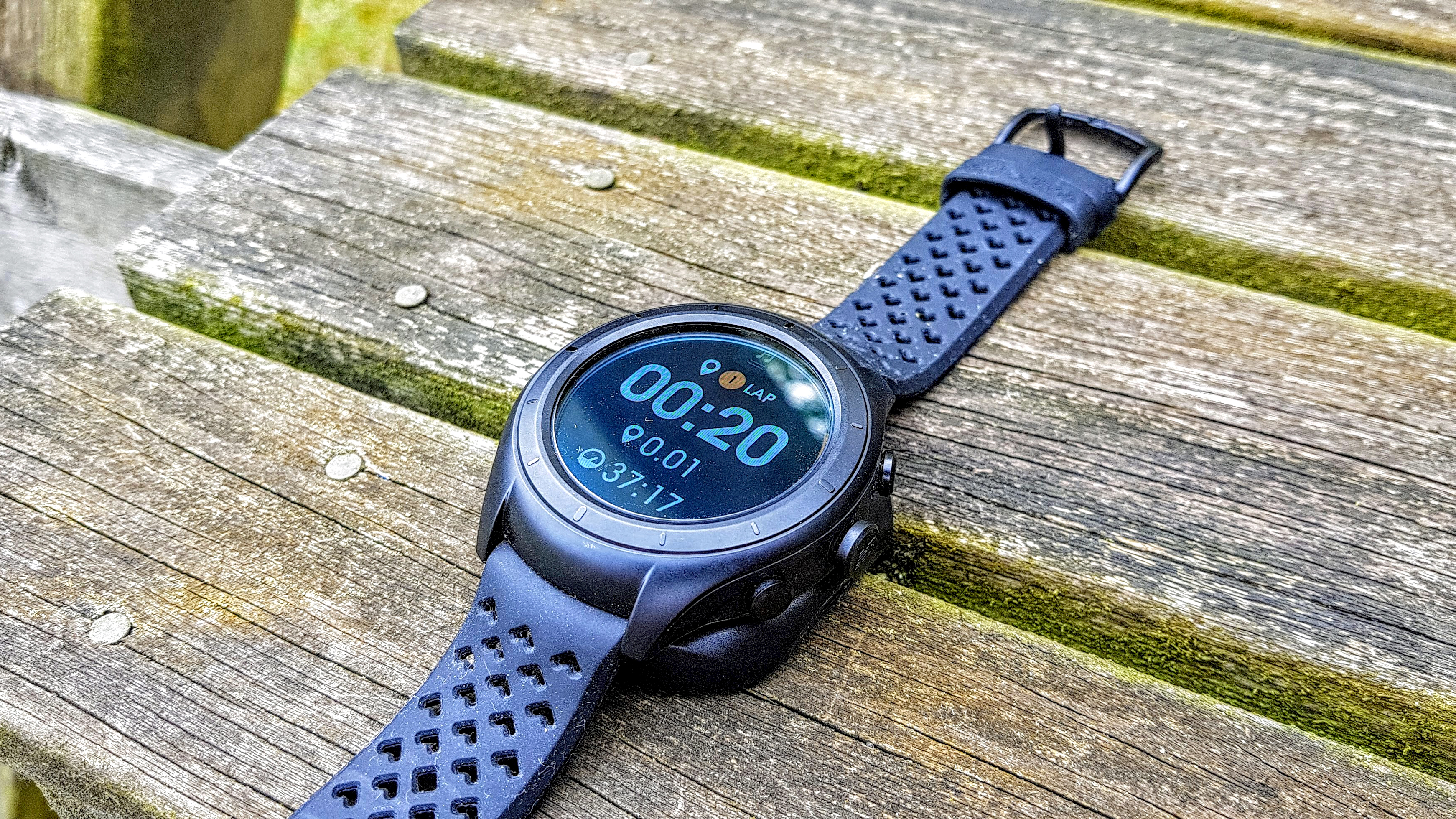
Screen type: AMOLED
Screen size: 1.39-inch
Battery life: 4 hours GPS
Tracking: GPS only
Multisport: Run / Cycle
Touchscreen: Yes
Smart notifications: Yes
Heart rate monitor: Yes
The fact the RunIQ has been developed with Strava should be a worry for the industry. One of the most popular running platforms, a huge running brand and the tech smarts of Intel? Garmin, Polar and Apple should all be running scared, right?
They don’t need to worry. While tie-in with Strava should be an awesome thing, it doesn’t really deliver much. The main running / cycling is fine, and better than the Android / iPhone smartwatch official Strava app, but that’s not saying much.
When Garmin watches can do things like let you know when you’re entering segments and the time you need to hit to beat them - it’s impossible to see why that’s not on offer here from the New Balance RunIQ.
The overall run tracking is, well, fine, as mentioned above. The recent update to Android Wear 2.0 is good - as in the previous iteration this was one of the worst running watches we’d ever used.
The heart rate monitor was erratic, the syncing impossible to trigger, a constant message that the activity hadn’t been saved after a workout… it wasn’t great.
The good news is that’s all improved with the new software - the heart rate is pretty close to a chest strap in terms of accuracy, the syncing more impressive and the weird notification removed.
But it’s not as good as other - cheaper - running watches when it comes to syncing with Strava. The data doesn’t seem as robust, with mile pace seeming erratic.
Overall, the distance is generally a bit erratic and on the stingy side, and the speed of restarting the watch when paused means you can sometimes realise a few minutes in that you're not tracking.
The GPS fix at the start is pretty good now thanks to the recent software update, with it only taking moments for the RunIQ to locate you - especially if you're in an area you've been before.
The biggest flaw is the heart rate data doesn’t sync to the app. The heart rate data. On a watch developed with Strava. Doesn’t go to Strava.
However, the GPS tracking on this watch is good and should work throughout the device for other apps too - so if you want to ditch the phone and use just a wrist piece, this will fulfil that.
With Google Fit on board as well you’ll be able properly track strength and other activities - but you can get that with devices like the LG Watch Sport, which are superior in our eyes.
The New Balance RunIQ needs strength training on board, and dedicated training plans that help you get quicker - that’s a no-brainer given both the brands already offer help to improve your running, so they should be on this watch.
New Balance RunIQ design gallery
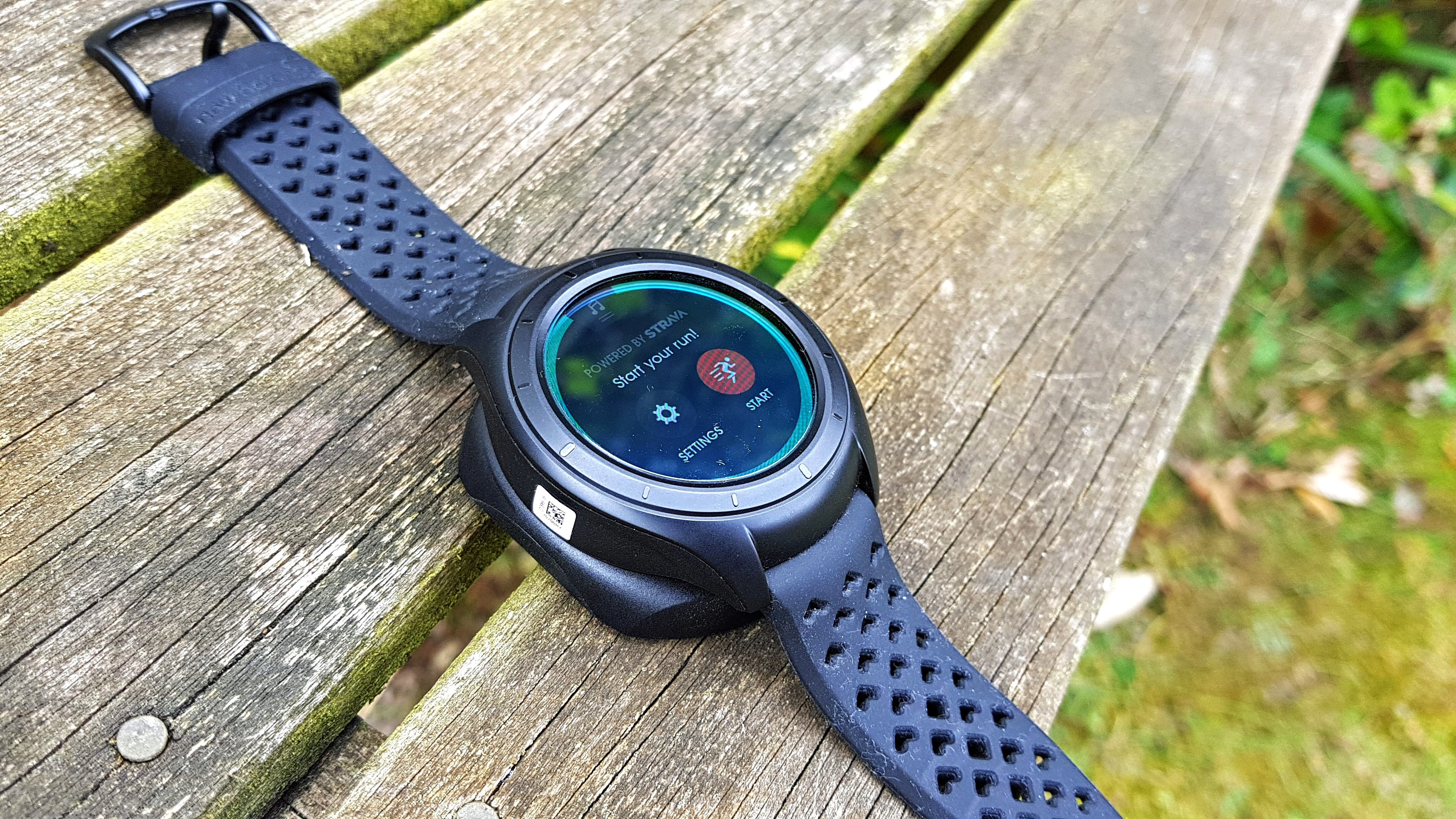
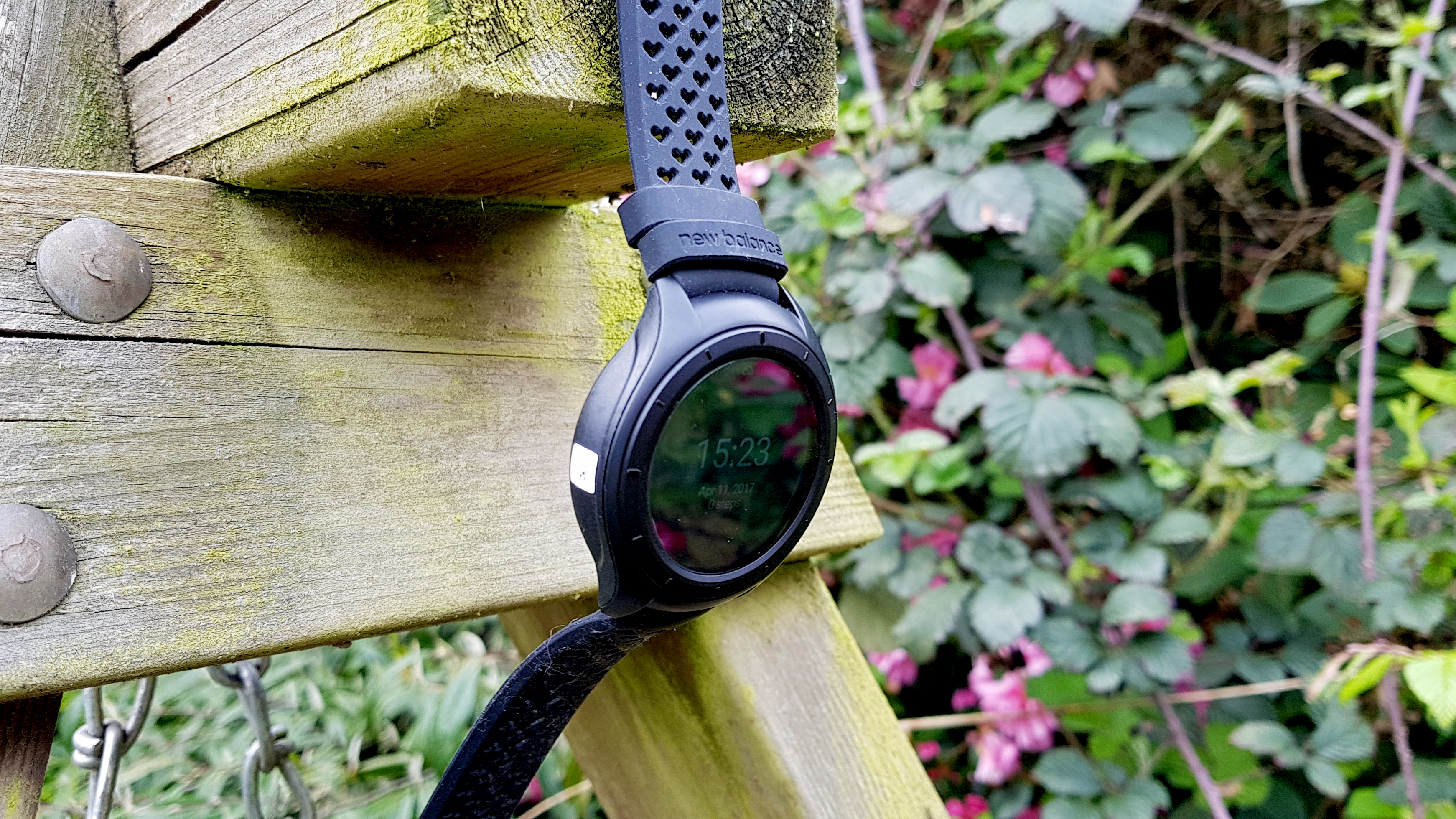
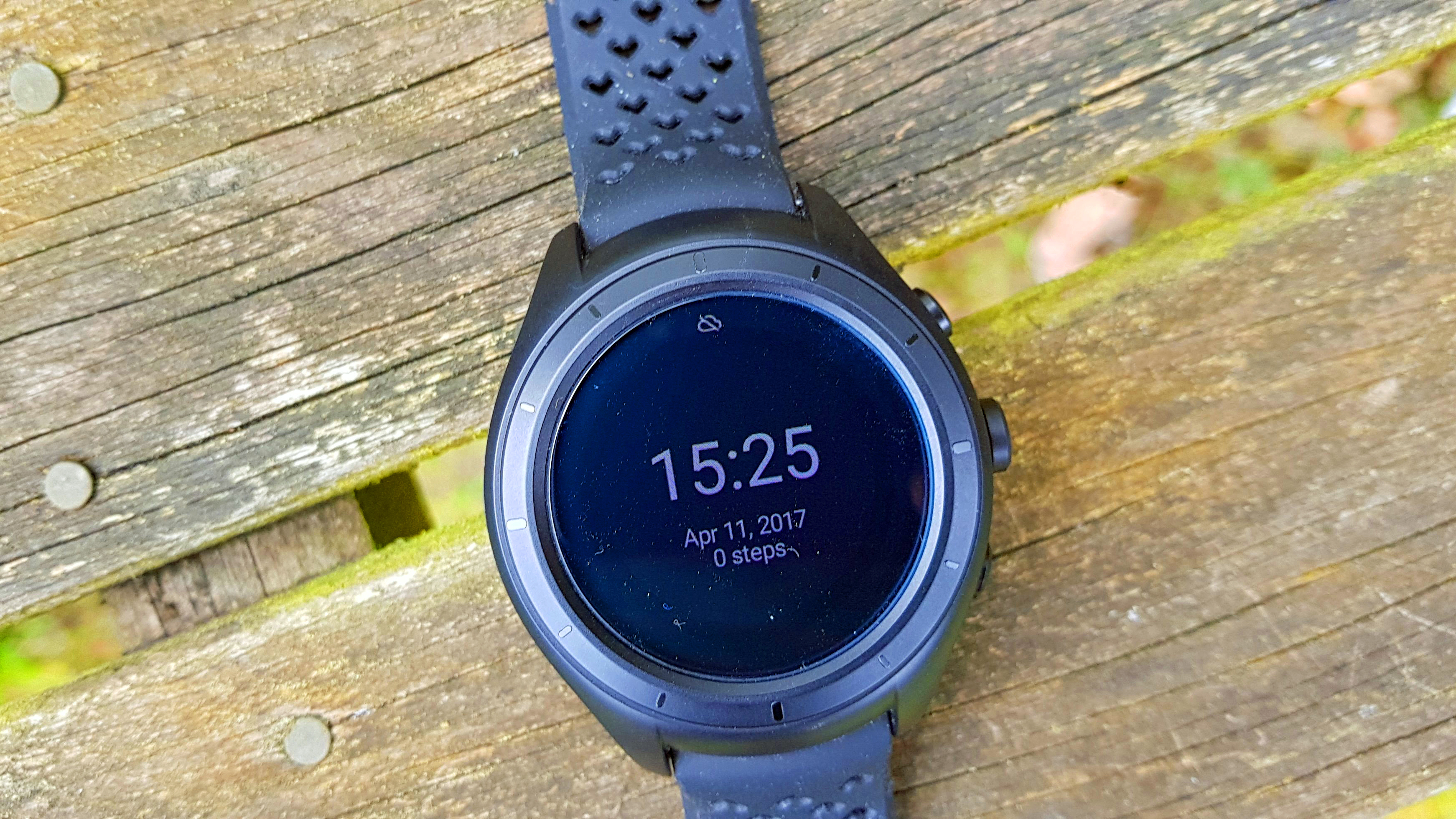

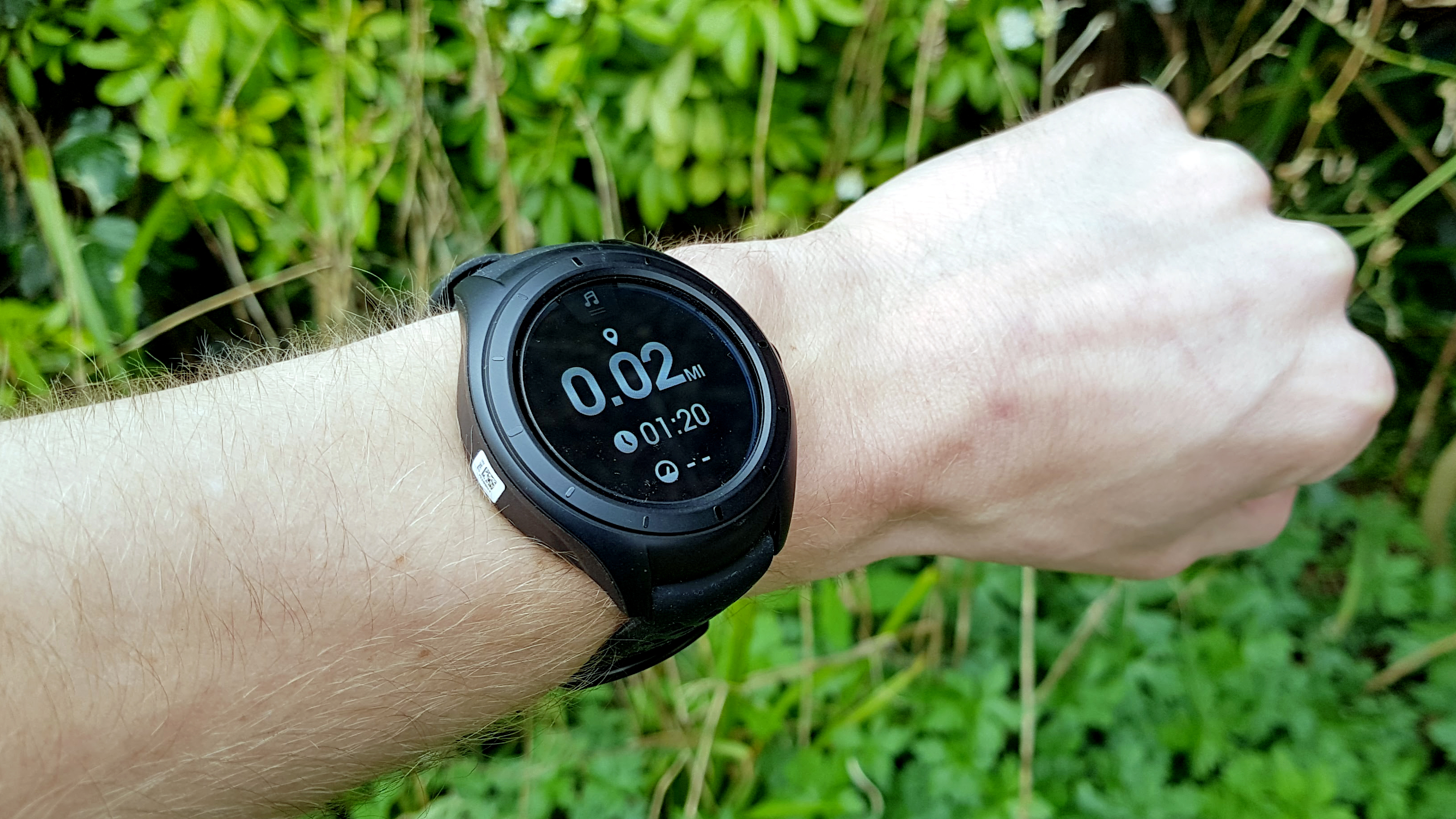
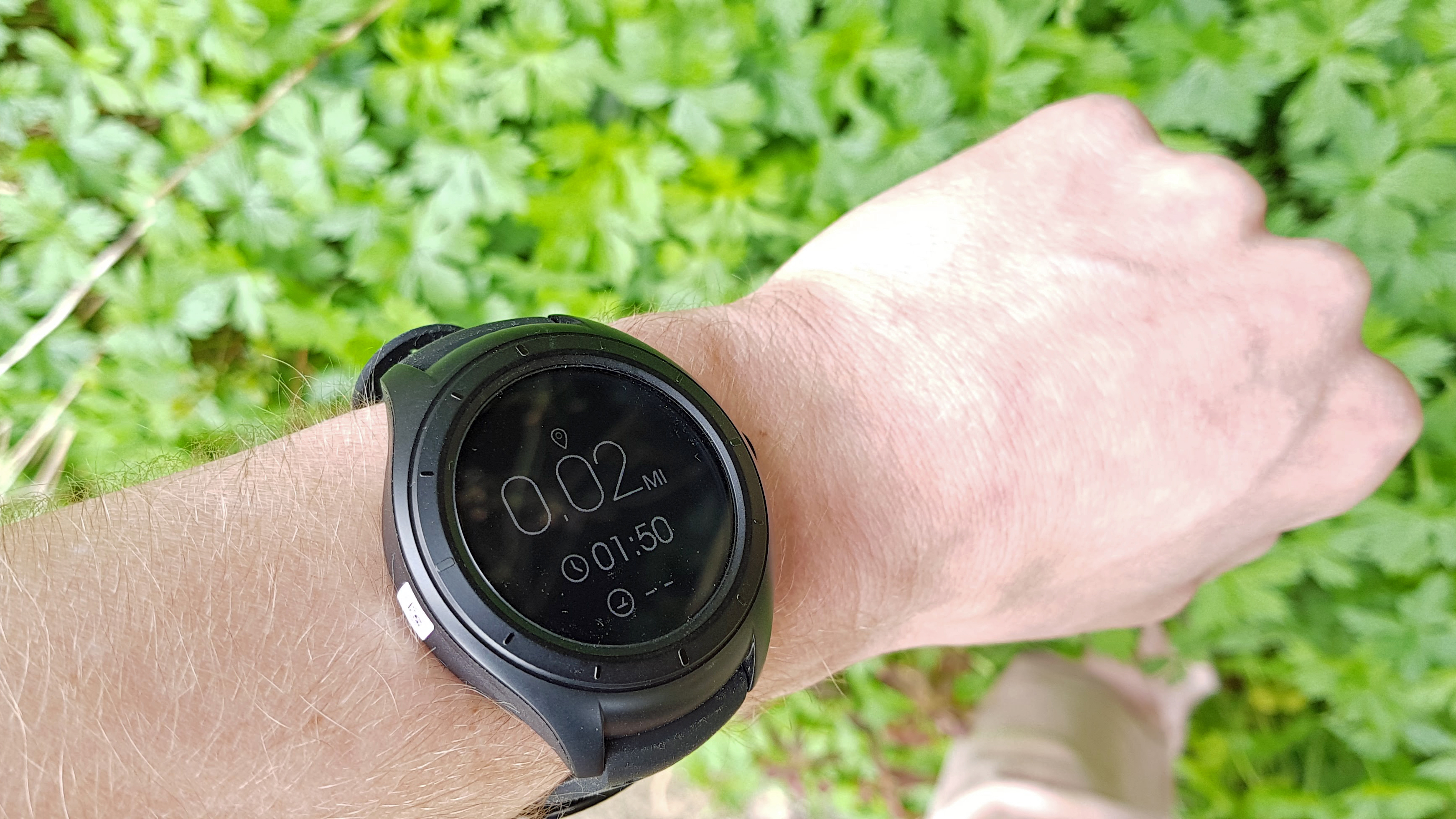
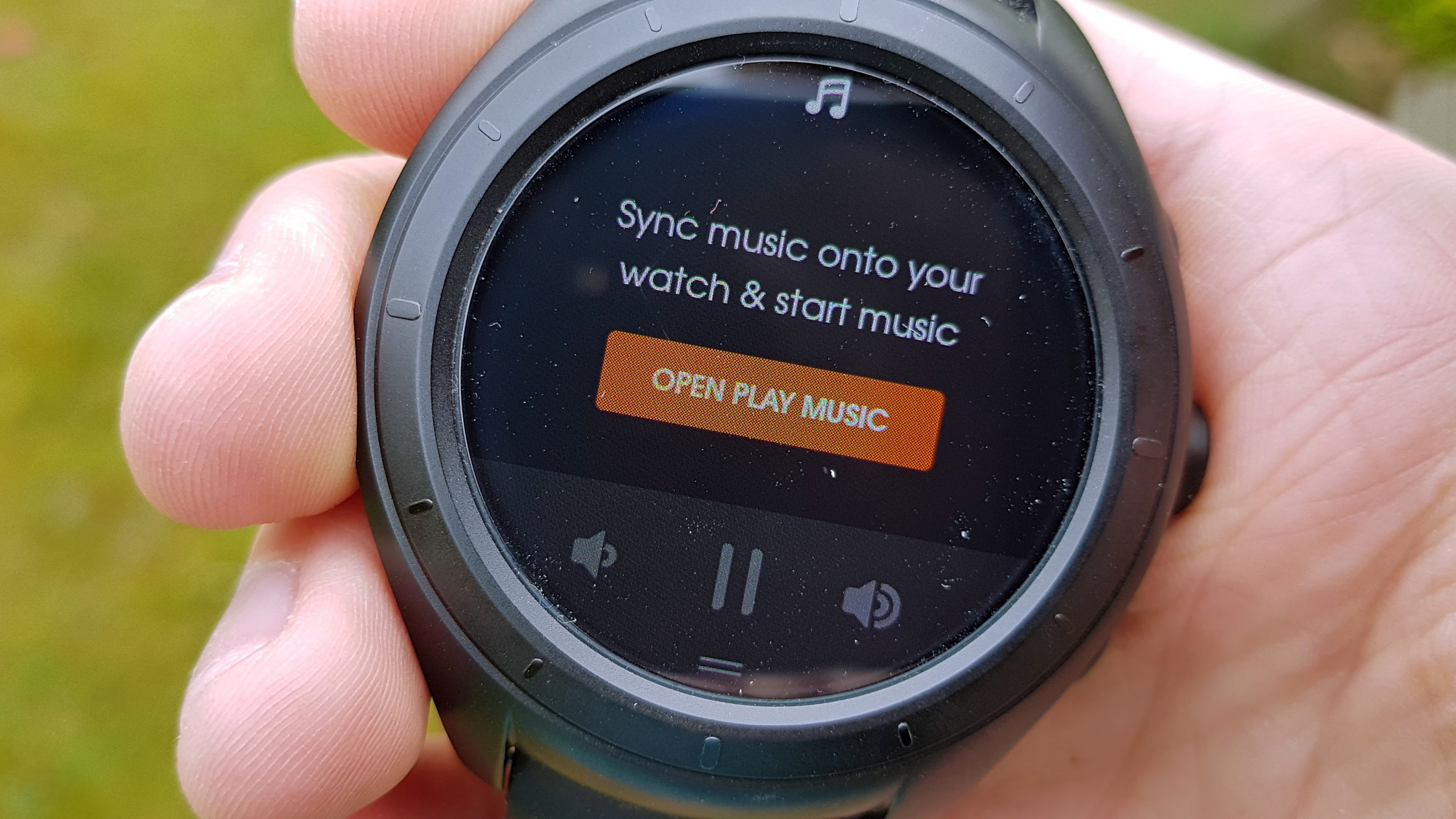
Chunky, but can be worn all day
- Comfortable strap
- Larger design, but not unwieldy
- Screen not bright enough when running
Like so many smartwatches out there the New Balance RunIQ is a large device indeed, with a chunky, rubberised bezel flanking the larger LCD screen. Three buttons stick out of the right hand side, allowing you to interact with the watch, start / pause a run, and a set a lap or interact with music.
The screen is bright enough to see in most situations - if you're in particularly harsh sunlight, a quick trip to the notifications bar at the top of the watch is enough to let you boost the output to make things clearer (although that will eat your battery rather quickly indeed).
However, when running and raise your wrist to see information, it doesn't work well. If you've got the display turned off to save battery you have to tap to wake it, and if you've got the Always On display active then the information is very hard to see without a tap again. Not ideal.
The strap is a nice soft rubber, with easy buckling making it a piece of cake to pop the RunIQ on. You can change the 22mm strap as well, with the RunIQ coming with a neat little lever to make it one of the easiest bands we’ve ever had to change.
Seriously, why can’t all bands have this feature, rather than the immense pain of getting the watch pin caught under a fingernail?
Battery
- Easily lasts a day as a smartwatch
- Will lose around 55% in 100 minutes of running
- Can't last a marathon for most people

With the ‘Always On’ display activated, the New Balance RunIQ will last you around a day and a half thanks to the Android Wear update. We found it to be pretty good for a smartwatch, although it’s not long enough to be considered as useful for sleep tracking, as you’ll still want to charge it daily.
The drop in battery life during a run, with all the sensors activated, is also acceptable. Over a 14 mile run that lasted 1:40, we noticed the battery dropping just over 50%, which means that you’ll ba able to do a marathon in around four hours with this watch before it gives up on you.
Turning off the ‘Always On’ display does help with battery life, but it makes the watch so unusable (as lifting the wrist to wake isn’t always accurate) so that’s not really an option.
Anything else I should know?
- Music playback limited to Google Play Music
- iOS compatibility still has no music
- Dual phone compatibility is a nice touch
Polar M600
A superior Android Wear running watch
Garmin Forerunner 630
One of the best watches for Strava syncing
Suunto Spartan Sport HR
A watch with a great wrist heart rate monitor
The good news with the New Balance RunIQ is that you can use it with either an Android device or iPhone, although it works better with the former.
The notifications seem more stable and the battery life a touch better, mostly thanks to the easier sync between Android Wear and Android ‘proper’.
That’s not to say we didn’t find the iPhone good to have as an option - it’s nice from Google that it worked to bring Android Wear to the iPhone - but you might not find the experience as robust.
One thing you do lose on the iPhone is the music function - you can save tunes from Google Play Music onto the RunIQ and play them back over Bluetooth… but only on Android Wear, with the same thing ‘coming soon’ to the iPhone from New Balance for a very long time.
We had an odd issue where we were playing music from Spotify from the iPhone while wearing the RunIQ, and a music controller popped up to skip tracks on the watch... but this just didn't work.

Not convinced? Try these:
If the New Balance PaceIQ isn’t for you, then we’ve picked three excellent choices for you to consider instead.
Polar M600

The Polar M600 is a cheaper, and in many ways superior, Android Wear running watch. It's got all the same features as the PaceIQ with the same sort of battery life, but more sports included and improved fitness tracking. It's chunky too, but a chunk of cash cheaper.
Garmin Forerunner 630

If you're after a watch that will work seamlessly with Strava, the Garmin range does it well - and this is the best running watch the brand has to offer. With reams of stats to pore over, great sleep tracking and step counting too, all it lacks is an inbuilt heart rate monitor - and that's no bad thing for many.
Suunto Spartan Sport Wrist HR

The Suunto Spartan Sport Wrist HR is a mouthful, but it has one of the best heart rate monitors on the wrist we've ever used. The GPS fix is super quick, and while it's massive it's a great multi-sport watch with a huge range of features.

Gareth has been part of the consumer technology world in a career spanning three decades. He started life as a staff writer on the fledgling TechRadar, and has grew with the site (primarily as phones, tablets and wearables editor) until becoming Global Editor in Chief in 2018. Gareth has written over 4,000 articles for TechRadar, has contributed expert insight to a number of other publications, chaired panels on zeitgeist technologies, presented at the Gadget Show Live as well as representing the brand on TV and radio for multiple channels including Sky, BBC, ITV and Al-Jazeera. Passionate about fitness, he can bore anyone rigid about stress management, sleep tracking, heart rate variance as well as bemoaning something about the latest iPhone, Galaxy or OLED TV.
